Do you have a question about the Goodman GPG12 and is the answer not in the manual?
Instructions on how to report shortages, damages, or order repair parts, including contact information.
Guides installers to familiarize themselves with the manual and specific installation requirements.
Advises owners to read and keep their warranty certificate in a safe place.
Provides critical steps to follow if a gas smell is detected, including immediate actions and who to contact.
Prohibits using the unit as a construction heater due to potential premature failure and exposure to harsh environments.
Warns against using the unit if any part has been submerged in water and advises professional inspection.
Highlights the danger of carbon monoxide poisoning, especially in enclosed areas with other CO-producing devices.
Outlines essential requirements for all installations, including leveling, clearance from openings, and avoiding corrosive environments.
Specifies requirements for concrete bases for ground-level installations, including size and thickness.
Addresses structural strength requirements and the need for a safe, flat surface for rooftop installations.
Details requirements for roof curb installation, including structural support and ductwork placement.
Instructions for inspecting the unit for damage upon arrival and reporting procedures.
Emphasizes maintaining the unit in an upright position during rigging and using appropriate lifting methods.
Provides guidance on lowering the unit onto a roof mounting curb, noting its center of gravity.
Covers pipe sizing, inlet gas pressure, and derating for high altitudes for natural gas units.
Details proper piping practices, including material selection, joint compound use, drip legs, and leak testing procedures.
Discusses conversion kits, safety standards, and supply pressure requirements for propane gas units.
Stresses the critical need for a gas detecting warning device due to propane's reduced odorant level and heavier-than-air properties.
Explains factors affecting propane supply pressure and requirements for tanks, regulators, and piping materials.
Provides guidelines for mounting thermostats, emphasizing optimal location for accurate temperature sensing.
Instructs on connecting low voltage wiring to the thermostat and ensuring connections are waterproof.
Details connecting line voltage power supply and ensuring proper electrical grounding according to codes.
Advises on using appropriate fuses or circuit breakers to protect the unit from overcurrent conditions.
Explains how to reconnect transformer primary leads for 230V or 208V operation.
Guides on setting the heat anticipator on the thermostat to ensure proper heating cycle frequency.
Describes how to convert units for horizontal or down-discharge airflow and the need to adjust blower speed if necessary.
Illustrates how to remove and install duct covers for different airflow configurations.
Covers duct system design, weatherproof barriers, and installation standards for exposed ductwork.
Emphasizes the necessity of air filters for performance and preventing internal part damage, and how to select them.
Details the self-contained venting system and the installation of the flue hood and bug screen.
Explains the condensate drain connection and the requirement for a positive liquid seal.
Describes the step-by-step process of how the unit initiates and maintains heating operation.
Outlines the operational steps for cooling mode, from thermostat call to unit shutdown.
Explains the sequence for operating the unit in fan-only mode.
Details the steps for starting up the heating section, including checks and safety controls.
Explains the function and location of the rollout protection device and safety warning for resetting it.
Describes the secondary limit control, its purpose, and conditions that may cause it to trip.
Lists essential checks to perform before putting the unit into operation, including gas and power supply status.
Provides methods for measuring inlet gas pressure for natural and propane gas, including required tools.
Details how to measure manifold pressure with burners operating and how to adjust the pressure regulator.
Explains how to check and adjust gas inlet pressure based on fuel type and potential issues.
Outlines the procedure for measuring natural gas input using a gas meter and calculating BTU per hour.
Describes how to check burner flames for proper adjustment, stability, and color, and safety warnings.
Explains how to measure temperature rise and its importance for proper unit operation and blower speed.
Details the importance of checking external static pressure to determine if airflow is proper.
Guides on how to adjust blower speed taps for correct air temperature rise, with safety warnings.
Outlines how to check the operation of limit controls, including main burners turning off and blower delay.
Details the steps required to safely shut down the unit for maintenance or service.
Covers cooling startup, compressor protection devices, and refrigerant charging for optimal performance.
Explains how to interpret diagnostic LED flashes for identifying internal and external control faults.
Discusses internal control failures, external lockouts, and causes like dirty filters or faulty limits.
Covers problems related to pressure switches being stuck open or closed, and their diagnostic codes.
Explains thermal protection device failures, causes of primary limits opening, and automatic resetting.
Describes a fault where flame is detected with the gas valve deenergized, its cause, and reset procedure.
Explains the built-in delay feature to protect the compressor from short cycling situations.
Advises on annual inspection and cleaning of the outside coil for optimal performance.
States that condenser, evaporator, and induced draft motors are permanently lubricated and require no oiling.
Details how to clean the flame sensor with steel wool to ensure a stable microamp signal.
Provides step-by-step instructions for cleaning flue passages and heat exchanger tubes.
Guides on inspecting the main burner flame for stability, color, and proper extension.
Step-by-step instructions for cleaning the burners, including manifold removal and reassembly.
Lists available accessories and functional parts for the unit, with ordering information.
Provides guidance on ordering parts using model and serial numbers and obtaining sheet metal parts.
A chart correlating diagnostic LED flashes with specific operational faults and their causes.
Illustrates the timing sequence of various components during the heating cycle.
Depicts the timing sequence of components during the cooling cycle.
Provides detailed diagrams and a table showing the physical dimensions of the unit and its components.
Explains the component legend, wiring notes, power supply details, and motor speed tap configurations.
Lists the diagnostic codes indicated by the status light on the furnace control board for troubleshooting.
Specifies minimum clearances required around the unit for service and proximity to combustible materials.
Provides a table listing recommended filter sizes based on the unit's tonnage.
Instructions on how to report shortages, damages, or order repair parts, including contact information.
Guides installers to familiarize themselves with the manual and specific installation requirements.
Advises owners to read and keep their warranty certificate in a safe place.
Provides critical steps to follow if a gas smell is detected, including immediate actions and who to contact.
Prohibits using the unit as a construction heater due to potential premature failure and exposure to harsh environments.
Warns against using the unit if any part has been submerged in water and advises professional inspection.
Highlights the danger of carbon monoxide poisoning, especially in enclosed areas with other CO-producing devices.
Outlines essential requirements for all installations, including leveling, clearance from openings, and avoiding corrosive environments.
Specifies requirements for concrete bases for ground-level installations, including size and thickness.
Addresses structural strength requirements and the need for a safe, flat surface for rooftop installations.
Details requirements for roof curb installation, including structural support and ductwork placement.
Instructions for inspecting the unit for damage upon arrival and reporting procedures.
Emphasizes maintaining the unit in an upright position during rigging and using appropriate lifting methods.
Provides guidance on lowering the unit onto a roof mounting curb, noting its center of gravity.
Covers pipe sizing, inlet gas pressure, and derating for high altitudes for natural gas units.
Details proper piping practices, including material selection, joint compound use, drip legs, and leak testing procedures.
Discusses conversion kits, safety standards, and supply pressure requirements for propane gas units.
Stresses the critical need for a gas detecting warning device due to propane's reduced odorant level and heavier-than-air properties.
Explains factors affecting propane supply pressure and requirements for tanks, regulators, and piping materials.
Provides guidelines for mounting thermostats, emphasizing optimal location for accurate temperature sensing.
Instructs on connecting low voltage wiring to the thermostat and ensuring connections are waterproof.
Details connecting line voltage power supply and ensuring proper electrical grounding according to codes.
Advises on using appropriate fuses or circuit breakers to protect the unit from overcurrent conditions.
Explains how to reconnect transformer primary leads for 230V or 208V operation.
Guides on setting the heat anticipator on the thermostat to ensure proper heating cycle frequency.
Describes how to convert units for horizontal or down-discharge airflow and the need to adjust blower speed if necessary.
Illustrates how to remove and install duct covers for different airflow configurations.
Covers duct system design, weatherproof barriers, and installation standards for exposed ductwork.
Emphasizes the necessity of air filters for performance and preventing internal part damage, and how to select them.
Details the self-contained venting system and the installation of the flue hood and bug screen.
Explains the condensate drain connection and the requirement for a positive liquid seal.
Describes the step-by-step process of how the unit initiates and maintains heating operation.
Outlines the operational steps for cooling mode, from thermostat call to unit shutdown.
Explains the sequence for operating the unit in fan-only mode.
Details the steps for starting up the heating section, including checks and safety controls.
Explains the function and location of the rollout protection device and safety warning for resetting it.
Describes the secondary limit control, its purpose, and conditions that may cause it to trip.
Lists essential checks to perform before putting the unit into operation, including gas and power supply status.
Provides methods for measuring inlet gas pressure for natural and propane gas, including required tools.
Details how to measure manifold pressure with burners operating and how to adjust the pressure regulator.
Explains how to check and adjust gas inlet pressure based on fuel type and potential issues.
Outlines the procedure for measuring natural gas input using a gas meter and calculating BTU per hour.
Describes how to check burner flames for proper adjustment, stability, and color, and safety warnings.
Explains how to measure temperature rise and its importance for proper unit operation and blower speed.
Details the importance of checking external static pressure to determine if airflow is proper.
Guides on how to adjust blower speed taps for correct air temperature rise, with safety warnings.
Outlines how to check the operation of limit controls, including main burners turning off and blower delay.
Details the steps required to safely shut down the unit for maintenance or service.
Covers cooling startup, compressor protection devices, and refrigerant charging for optimal performance.
Explains how to interpret diagnostic LED flashes for identifying internal and external control faults.
Discusses internal control failures, external lockouts, and causes like dirty filters or faulty limits.
Covers problems related to pressure switches being stuck open or closed, and their diagnostic codes.
Explains thermal protection device failures, causes of primary limits opening, and automatic resetting.
Describes a fault where flame is detected with the gas valve deenergized, its cause, and reset procedure.
Explains the built-in delay feature to protect the compressor from short cycling situations.
Advises on annual inspection and cleaning of the outside coil for optimal performance.
States that condenser, evaporator, and induced draft motors are permanently lubricated and require no oiling.
Details how to clean the flame sensor with steel wool to ensure a stable microamp signal.
Provides step-by-step instructions for cleaning flue passages and heat exchanger tubes.
Guides on inspecting the main burner flame for stability, color, and proper extension.
Step-by-step instructions for cleaning the burners, including manifold removal and reassembly.
Lists available accessories and functional parts for the unit, with ordering information.
Provides guidance on ordering parts using model and serial numbers and obtaining sheet metal parts.
A chart correlating diagnostic LED flashes with specific operational faults and their causes.
Illustrates the timing sequence of various components during the heating cycle.
Depicts the timing sequence of components during the cooling cycle.
Provides detailed diagrams and a table showing the physical dimensions of the unit and its components.
Explains the component legend, wiring notes, power supply details, and motor speed tap configurations.
Lists the diagnostic codes indicated by the status light on the furnace control board for troubleshooting.
Specifies minimum clearances required around the unit for service and proximity to combustible materials.
Provides a table listing recommended filter sizes based on the unit's tonnage.
| Brand | Goodman |
|---|---|
| Model | GPG12 |
| Category | Air Conditioner |
| Language | English |
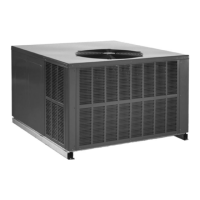
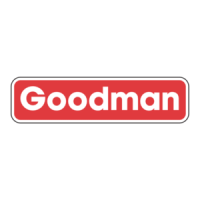

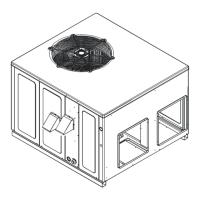

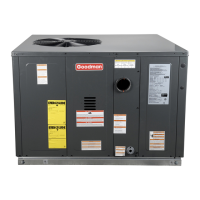
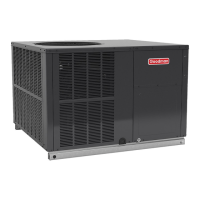

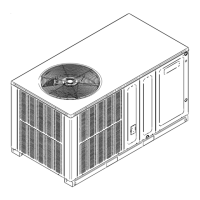

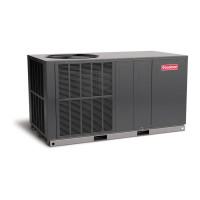
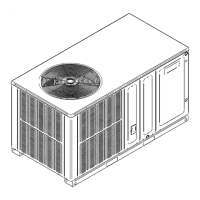
